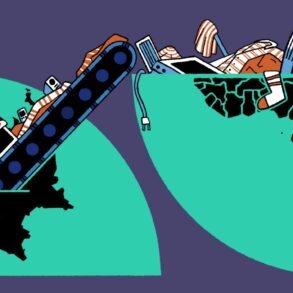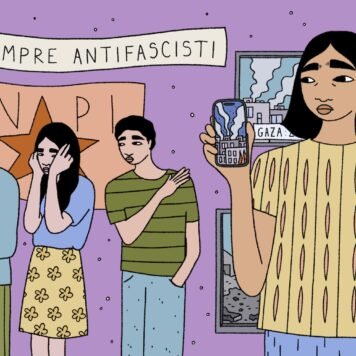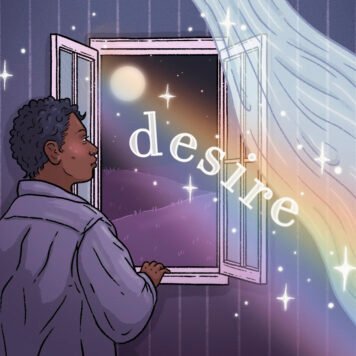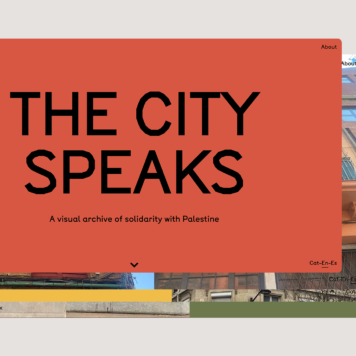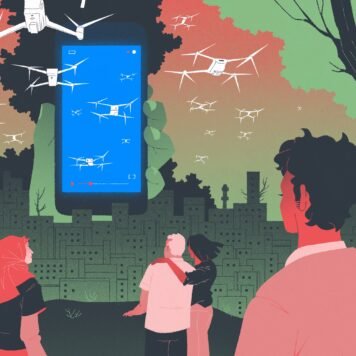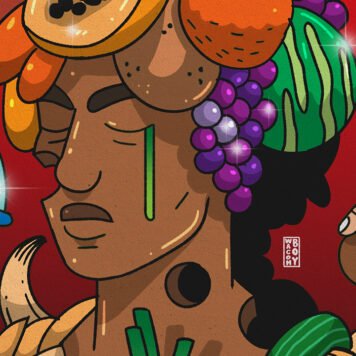Hottest buzzwords in the climate space: circular economy.
It’s peppered throughout scientific debate, present in the jargon of politicians, and is increasingly visible in creative and cultural sectors. You can find it at the centre of massive policy plans like the European Green Deal, as well as touted in sustainability statements of brands like Adidas and Starbucks.
But what does it mean? Without proper interrogation, it runs the risk of being the latest in a long line of exciting concepts which become greenwashed to mean absolutely zilch.
“One of the main tools of colonial manipulation is using vague catch-all words which sound progressive while doing the complete opposite,” says the Aotearoa Liberation League, a Māori platform for de-colonial justice. “Settler colonial states love using words like ‘sustainability’, ‘diversity’, ‘emissions reductions’ and ‘democracy.’ These vague terms with many meanings are fertile ground for colonial myths, and can easily be manipulated to mean anything.”
So, with ‘circularity’ as the latest addition to this list of deliberately vague terms, let’s drill down here: what exactly is it?
It’s a demand for a systemic change
The easiest way to define circularity is to contrast it with our current economic model: which is linear. We extract resources, we make that resource into a product, we sell those products and then we dispose of them.
Circularity proposes something different. Fundamentally, it redefines the economy around principles of regeneration and employs reuse, sharing, repair, refurbishment, remanufacturing and recycling to create a closed-loop system.
We have never produced more clothes and worn them less: in the US, an estimated 85% of all textiles annually produced end up in landfills on a yearly basis. A third of all food produced goes to waste, while people across the world suffer from hunger and malnutrition. The sheer scale of consumption and disposal means rich countries export tonnes and tonnes of toxic waste to poorer countries through waste colonialism. Resources dwindle, geopolitical struggles over scarce materials rise, and the biodiversity the planet needs to function declines.
In comparison, circularity proposes a better way of meeting the needs of people and protecting our planet. It creates space for individuals or businesses to map their supply chains and figure out how to minimise and re-circulate the resources used in their supply chains – working collaboratively to create closed looped systems.
True circularity proposes a system where ecosystems flourish, inspired by nature itself. “In the living world, there is no landfill – instead materials flow,” explains the circular design organisation Ellen MacArthur foundation. “One species’ waste is another’s food. Energy is provided by the sun. Things grow, then die, and nutrients return to the soil”.
It is a very old idea
This isn’t groundbreaking. Understanding we must live in balance with nature to thrive has been central to many complex Indigenous societies for thousands of years, where that which can no longer be used is redesigned back into the system as a resource. The linear economy of take, make, waste is a product of the industrial revolution, exported across the globe through colonial exploitation. Invaded countries became just another resource to be extracted to fuel the wealth of the imperial core.
Countering the linear model asks us to examine how our economy is still dependent on neo-colonialism, and if we don’t reckon with this as part of our transition to circularity, we are just reproducing the same systems of power.
Research already shows how across Europe, circular economy communications focus mostly on the white, highly educated entrepreneurs, which obfuscates those who have practised circularity for decades or centuries. Western leaders need to look to Indigenous and Global South designers, thinkers, academics and practitioners as experts in circular practice.
Māori businesses are an exceptional place to learn about embedded circular thinking, one example being Milk company Miraka. When making milk powder, the organic waste created is composted at a local worm farm. The worm castings in turn go to a local native plant nursery, which is used for waterway planting – showing how waste from one process becomes a resource for the next.
BUZIGAHILL, a Ugandan fashion brand, is dedicated to returning Uganda’s textile industry to the levels of the 1970s where more cotton was processed than exported. The provocation has led them to redesign second-hand clothes and re-distribute them to the Global North where they were originally discarded. Innovative design groups are creating closed loop systems and simultaneously resisting the global waste colonialism.
Circularity asks us to centre regenerative approaches, and that means addressing the global histories of colonial exploitation and learning from Indigenous values – not just looking for shiny new products.
It’s not just recycling: It’s a design challenge
While recycling is one circular strategy, understanding circularity as a radical proposition for change requires us to look much deeper than just at the end of a product’s life.
Circularity is about all interconnecting companies and governments that form our infrastructure and economy coming together. True circularity requires a fundamental transformation of society’s values, habits and the design of our supply chains. It’s about considering the life cycle of a product from its conception, and innovating upstream, not just treating the symptoms of a linear economy (waste) but dealing with its sickness.
So, when you look at it on a global scale – all that radical transformation of an interconnected society – it can feel absolutely overwhelming.
Yet, the cool thing about circularity is that it’s a proposition for an entirely new economy, as well as a design challenge we can all engage with. It requires the participation of every sector and industry, however big or small, to look at what they use, what they waste and figure out how to close those loops.
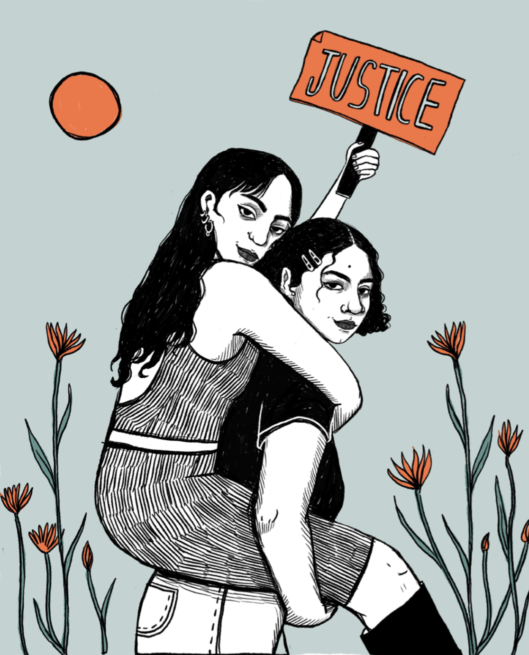
Join our mailing list
Sign up for shado's picks of the week! Dropping in your inbox every Friday, we share news from inside shado + out, plus job listings, event recommendations and actions ✊
Sign up for shado's picks of the week! Dropping in your inbox every Friday, we share news from inside shado + out, plus job listings, event recommendations and actions ✊
The design of products has played a huge role in maintaining our current broken systems. The European Commission estimates that 80% of a product’s environmental impact is determined in the design stage. This ultimately means design is a major driver of a shift to circularity: whether a product, service, business or something else, circular design creates solutions which deliver better outcomes for the entire system.
One example beyond recycling is rethinking models of ownership. Instead of buying a toaster, you would simply licence them from the manufacturers. The products are then ensured to return to their makers, to be either be repaired or re-designed into something else – extending the life cycle of a product drastically, and creating buy-in for better stewardship of our home technologies.
Joanna Choukier, Director of Design and Innovation at The Royal Society of Arts, reminds us that – much like in nature – there will never be one finite solution that will sort everything out forever. “Everything we design must go through growth, maturity and death, but where it dies it leaves creative compost for the next idea to come.”
Circularity asks us to leave more space for creativity and adaptability, so processes and design can change over time – the design challenge of our lifetime.
It is as radical as we make it
The responsibility lies with us to keep interrogating the use of this word, to ensure brands don’t pick it up, co-opt it and let it become another part of corporate greenwash.
Circularity provokes something exciting, something alternate, and importantly, something possible. It looks ahead to a transformation of our economy, but rooted in the now. We can all take the fundamentals of circularity and begin to examine our own lives, our places of work, our consumption for the future. It’s an exciting and challenging provocation. But we must view the commitment of all these big wigs to circularity as leverage: to force engagement with truly transformational and collective work, rather than just simply recycling.
This article is in collaboration with What Design Can Do (WDCD), an international organisation that advocates the power of design and creativity to transform society. WDCD have recently launched their latest Climate Action Challenge in partnership with the Ikea Foundation – the Make It Circular Challenge. Creatives and designers from all over the world are invited to submit their projects across themes: what we eat, what we wear, what we buy, how we package and how we build. The Make it Circular Challenge provides in-depth design briefs presenting original research on circularity and highlighting opportunities for designers and entrepreneurs alike. Winning projects will turn into reality with €10.000 in funding and a global development programme co-created with Impact Hub Amsterdam, which includes online training, mentoring sessions and a bootcamp. This programme will support the winning teams in further strengthening their projects, and propelling them through 2023 and beyond. The open call closes on 11 January 2023 and more information can be found here.
What can you do?
- Are you interested in how this might apply to your workplace? The Ellen MacArthur Foundation has a tonne of educational resources and toolkits.
- Learn more about principles for regenerative design from Joanna Choukier here.
- Check out the upcoming documentary Going Circular from the makers of My Octopus Teacher.
- For further reading, Social and Cultural Aspects of the Circular Economy: Towards Solidarity and Inclusivity, edited by Viktor Pál, provides a deeper exploration of what circularity means for society.
- Check out What Design Can Do and join their Make It Circular Challenge.




